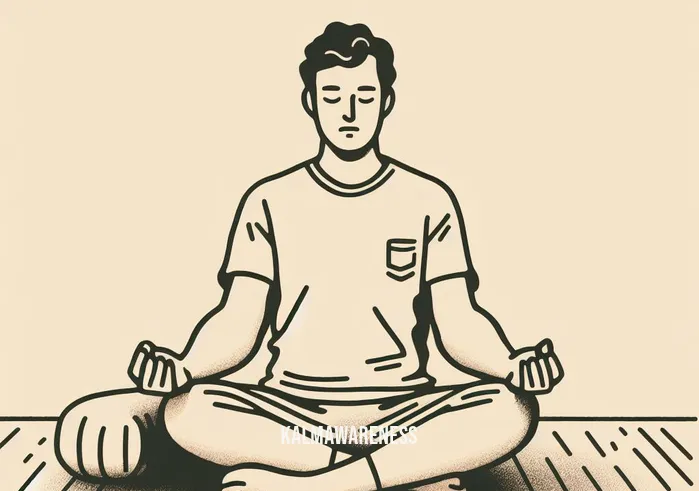What Are The Three Components of Mindfulness: A Comprehensive Introduction
In an ever-accelerating world, the value of slowing down and connecting with the present moment is paramount. Mindfulness, a practice rooted in ancient traditions but finding contemporary relevance, is often hailed as the antidote to our digital distractions and stress-inducing routines. But what exactly is mindfulness? At its core, the concept revolves around three key components: Attention, Awareness, and Non-judgment. Over the course of this article series, we will delve deeper into each of these components, revealing their interconnectedness and their relevance to our daily lives.
Understanding the Essence of Mindfulness
Before diving into the three components, it’s essential to define what mindfulness truly means. Mindfulness, as discussed in Mindful Minds, is a mental state achieved by focusing one’s attention on the present moment while calmly acknowledging and accepting feelings, thoughts, and bodily sensations. It’s a state of being rather than doing.
The Three Pillars of Mindfulness
Attention: This involves directing our focus to the present task or experience. It is the act of noticing without getting lost in the narrative of our minds. Attention is our ability to hone in on a particular aspect of our experience, such as our breath during a brief meditation on breath. It’s the antithesis of multitasking, which as explored here, can be counterproductive to genuine mindfulness.
Awareness: Beyond just attention, awareness is the broad observation of one’s surroundings, feelings, and thoughts. It’s like widening the lens through which we perceive our reality. For instance, while meditating, one might become aware of the room’s temperature, the distant sounds of traffic, or even the feeling of the floor beneath our body.
Non-judgment: Possibly the most challenging component for many, non-judgment is about observing without evaluating. It’s about recognizing a feeling, thought, or sensation without labeling it as ‘good’ or ‘bad’. This perspective is eloquently captured in the phrase, “And remember, no matter where you go, there you are”. It underscores the importance of acceptance.
The Significance of Breathing and Meditation
Breathing and meditation are closely linked with mindfulness. Our breath, a consistent and ever-present phenomenon, serves as an ideal anchor for our attention. Whether it’s a 7-minute meditation or an in-depth documentary on meditation, the emphasis on breath is omnipresent. Meditation, on the other hand, is a structured practice that allows us to cultivate and strengthen our mindfulness muscles. It’s the gym for our mindful brain.
The Journey Ahead
Understanding mindfulness is akin to embarking on a journey within. As we proceed, we’ll explore exercises to cultivate attention, delve deeper into the realm of awareness, and understand the challenges and rewards of adopting a non-judgmental mindset. Whether you’re trying to relax and be aware or seeking guidance on how to truly see the world around you, mindfulness offers a wealth of insights.
This introduction serves merely as a precursor to a vast and intriguing subject. With the foundation now set, we invite you to journey with us into the subsequent chapters where we will delve deeper into each of these components, offering insights, exercises, and real-life applications. We will unearth the myriad ways in which mindfulness can be interwoven into our daily routines, enhancing the quality of our lives.
For those eager to get started, we offer a hint on where our journey will take us next: the profound realm of attention. Discover how something seemingly simple can have profound implications for our well-being and understanding of the world.
Continue reading to unlock these insights and more.

Delving into the Pillars of Mindfulness: A Detailed Exploration
Mindfulness is often metaphorically compared to a tree, with its roots drawing nourishment from ancient practices and its branches offering shade in our chaotic contemporary life. Much like a tree, it’s crucial to understand the pillars or ‘trunks’ that support this powerful practice. In this segment, we will delve deeper into what are the three components of mindfulness, namely Attention, Awareness, and Non-judgment, illuminating the intricacies and benefits of each.
The Multifaceted World of Attention
Attention can be likened to a spotlight. Wherever we shine it, our focus intensifies, allowing us to observe finer details. But how does one cultivate better attention, especially in a world constantly clamoring for our attention?
- Focused Practices: Techniques such as focused meditation allow individuals to train their attention span. Much like working out a muscle, regular training enhances its strength.
- Daily Routines: Grounding exercises like touching a specific body part can serve as quick reminders to redirect our attention to the present moment.
- Mindful Activities: Simple actions, like pointing at oneself in the mirror, can serve as an act of self-recognition and a method to harness attention.
Awareness: The Expanded Horizon
If attention is the spotlight, awareness is the stage. It involves being cognizant of a broader spectrum of experiences without getting caught up in them.
- Observational Practices: Regular people gazing exercises can cultivate a heightened sense of external awareness.
- Introspection: One can also develop internal awareness through practices that focus on understanding our body’s sensations.
- Mindful Living: Cultivating a habit of staying fully present in every task ensures an expanded horizon of awareness.
Non-judgment: The Art of Neutral Observation
Non-judgment requires a delicate balance. It’s about detaching from our inherent biases and seeing things as they are. This doesn’t mean suppressing our feelings but rather observing them without getting emotionally entangled.
- Acceptance Techniques: Understanding that your mind will give up before your body helps in building resilience against premature judgments.
- Mindset Shifts: Continually reminding ourselves of the mantra, “no matter where you go, there you are”, can pave the way for non-judgmental thinking.
An Overview of Mindfulness Components
| Component | Key Practice | Related Benefit |
|---|---|---|
| Attention | Focused Meditation | Enhanced focus and reduced distractions |
| Awareness | Observational Practices | Broader perspective and greater comprehension |
| Non-judgment | Acceptance Techniques | Emotional stability and reduced stress |
| Combination of All | Real Eyes Meditation | Comprehensive mindfulness and balanced well-being |
| Underlying Foundation | Keeping the Definition in Mind | Consistent practice and enhanced understanding |
Understanding each component in-depth allows us to integrate mindfulness more seamlessly into our lives. Each pillar, while distinct, works in harmony with the others, creating a robust structure of mental well-being and clarity.
As we wrap up this chapter, it’s worth reflecting on how the components of mindfulness can influence not just our individual lives but also our collective consciousness. In the next chapter, we’ll explore the real-world applications of mindfulness, illustrating its transformative power in various sectors of life. From professional settings to personal relationships, the tenets of mindfulness offer valuable insights that can revolutionize our interactions and perspectives.
Continue reading to embark on this transformative journey.

Drawing Hope from the Triad of Mindfulness
The journey through the intricacies of mindfulness not only deepens our understanding but serves as a source of inspiration. This chapter sheds light on the real-world impacts of embracing the three components of mindfulness: Attention, Awareness, and Non-judgment. By weaving together anecdotes, quotes, and insights, we’ll unearth the transformative power of mindful living and the hope it brings.
Narratives of Transformation
Several individuals and communities have transformed their lives by incorporating the principles of mindfulness. For instance, after a traumatic event, Jane discovered the power of being present in the moment. This practice helped her mitigate anxiety and build resilience. Another example is a school that incorporated 7-minute meditation sessions into their daily routine. As a result, the institution observed a significant decline in disciplinary actions and an increase in students’ overall well-being.
Quotes: Anchors of Hope and Inspiration
“In today’s rush, we all think too much — seek too much — want too much — and forget about the joy of just being.” – Eckhart Tolle. This quote emphasizes the essence of mindfulness, particularly the component of awareness.
“The best way to capture moments is to pay attention. This is how we cultivate mindfulness.” – Jon Kabat-Zinn. Here, the value of sharpening our attention, one of the components of mindfulness, is underscored.
“Look past your thoughts, so you may drink the pure nectar of this moment.” – Rumi. Delving into the non-judgmental aspect, Rumi inspires us to experience life without the cloud of preconceived notions.
A Glimpse into Mindfulness in Motion
Mindfulness isn’t just a static practice. It’s dynamic and, when incorporated into daily life, can lead to transformative outcomes. For instance, the documentary team that captured a meditation-focused film reported a profound personal shift. Immersing themselves in the world of mindfulness, they not only documented change but personally experienced a heightened sense of well-being.
Another instance is the Rise Up Society, which utilized the principles of mindfulness to uplift communities. By teaching individuals to be present, observant, and non-judgmental, they empowered them to harness their inner resources for community development.
Breathing Life into Mindfulness
Breathing exercises, an integral part of mindfulness, have a profound impact. The brief meditation on breath technique, for instance, has been employed by many as a beacon of hope during tumultuous times. This simple yet potent practice reaffirms the idea that inspiration often resides in the most fundamental aspects of our existence.
The Road Ahead
With each narrative, quote, and instance, we realize that the components of mindfulness aren’t just theoretical constructs but are transformative tools that inspire hope and positive change. As we journey further, the subsequent chapter promises to dive deeper into the practical techniques associated with mindfulness. From simple daily rituals to more in-depth practices, continue reading to equip yourself with tools that can refine your mindfulness journey.

The Triad of Mindfulness: An Analytical Breakdown
Mindfulness, with its roots deeply embedded in ancient practices, has become a buzzword in modern wellness. As we progress through our journey, it’s crucial to have a clear and detailed understanding of what are the three components of mindfulness. Using a structured breakdown, this chapter delves into the nuances of Attention, Awareness, and Non-judgment, and how these elements converge to create a mindful mindset.
1. Attention: The Focal Point of Mindfulness
Definition: Attention, in the context of mindfulness, refers to the intentional focus on the present moment without distraction.
Features:
- Selective Focus: Choosing what to concentrate on, filtering out extraneous stimuli.
- Sustained Engagement: Maintaining focus over extended periods, often achieved through focused practices.
- Avoiding Multi-tasking: Emphasizing the quality of focus over quantity, underscoring why mindfulness triumphs over multitasking.
Benefits:
- Reduces stress by concentrating on the ‘now.’
- Enhances cognitive functions.
- Promotes clarity and reduces mental clutter.
2. Awareness: The Broad Canvas of Perception
Definition: Awareness signifies the broad observation of one’s inner and outer environments without any filters.
Features:
- Expansive Observation: Recognizing the entirety of one’s experience.
- Insight into the Body: Through techniques like touch-based mindfulness, one becomes attuned to bodily sensations.
- External Acuity: Recognizing environmental cues and being fully present in interactions.
Benefits:
- Deepens self-understanding and introspection.
- Enhances empathy and connection with others.
- Boosts gratitude for the richness of life.
3. Non-judgment: The Art of Unbiased Acceptance
Definition: Non-judgment is the practice of observing experiences without labeling or judging them as ‘good’ or ‘bad’.
Features:
- Unbiased Observation: Encountering experiences without preconceived notions.
- Reframing Self-perception: Engaging in practices like pointing at oneself in the mirror without negative self-talk.
- Openness to Experiences: Embracing events without resistance or attachment, aligning with the mindset of “wherever you go, there you are”.
Benefits:
- Promotes emotional balance and resilience.
- Reduces the burden of perfectionism.
- Fosters a more accepting and compassionate worldview.
Mindfulness in Practice
Beyond theoretical understanding, it’s the real-world applications of these components that bring them to life. Let’s look at a common technique:
- Breathing Meditation:
- Focus: Breathing acts as an anchor, drawing attention back whenever the mind wanders.
- Awareness: One remains observant of the inhalation and exhalation process, feeling the breath’s rhythm and temperature.
- Non-judgment: Embracing each breath without analyzing or striving for a ‘perfect’ meditative experience.
Anticipation for the Conclusion
The intricacies of mindfulness, as explored above, highlight its transformative potential. As we approach our final chapter, anticipate a synthesis of our discussions, along with actionable insights to incorporate mindfulness seamlessly into your daily life. Stay tuned to grasp the culmination of this enriching journey.

Reflecting on the Mindful Journey
As we pause and reflect on our expedition through the serene landscapes of mindfulness, the echoes of Attention, Awareness, and Non-judgment resonate profoundly. These aren’t mere words; they’re the pillars supporting our mindful existence. Let’s look back and wrap up with an enlightened perspective on what are the three components of mindfulness.
The Gift of the Present
Throughout our discussions, the recurring theme has been the immense power of the present moment. It’s where attention thrives, filtering distractions and embracing the now. Remember, as you step out into your daily life, to savor every moment with mindful attention, creating an enriching tapestry of experiences.
Observing Without Filters
The vast canvas of awareness, encompassing both the internal and external realms, paints a picture of holistic understanding. Be it the whisper of the wind or the rhythmic beating of your heart, tuning into these subtle cues can be transformative.
Embracing Without Judging
Perhaps the most freeing aspect, Non-judgment, allows us to experience life without the shackles of labels. It’s an invitation to a dance where every move is perfect in its imperfection. Remember, as you confront life’s myriad experiences, to view them through the lens of compassionate acceptance.
Infusing Mindfulness into Life
Now, armed with these insights, how do we blend mindfulness into our daily grind? Simple. Start by dedicating a few minutes every day to a mindfulness practice. Let the learnings from this chapter guide your initial steps. And whenever in doubt, remember, revisit, and reflect.
A Warm Thank You
Before we close this chapter, a heartfelt gratitude for joining us on this enlightening journey. We hope it has been as transformative for you as it was for us while crafting it. And if ever the chaos of life clouds your vision, know that the sanctuary of mindfulness is but a breath away.
Hungry for More Insights?
Your journey doesn’t have to end here. Dive deeper, explore our treasure trove of articles on enhancing wellness or perhaps, for those visual learners, our mindful video sessions could be your next stop. Let your curiosity be your compass!
Stay tuned for more enlightening content in our upcoming editions. Remember, life’s beauty lies in the details, and mindfulness helps you embrace every intricate bit. Until next time, stay mindful and stay inspired!





